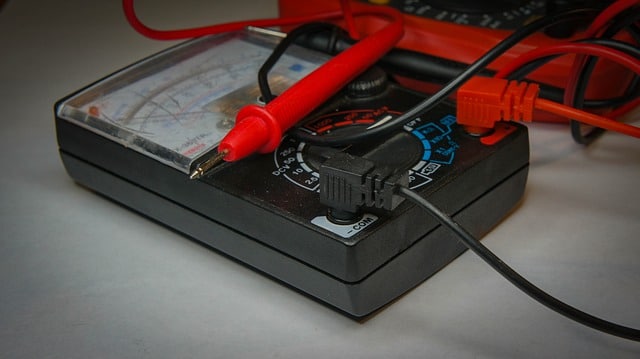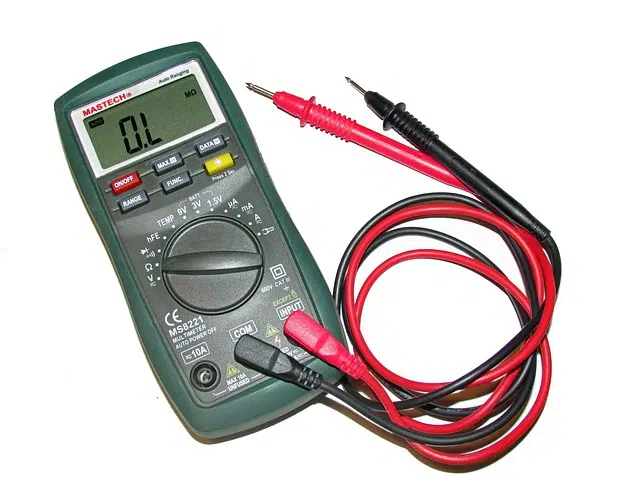
Analog ohmmeter displays values using a needle
An ohmmeter is a device used to measure electrical resistance in a circuit. As the name implies, the ohmmeter records ohms .
Overview
Ohm , meanwhile, is the electrical resistance existing between two sectors of a conductor when, in said conductor, a constant potential difference of one volt that is applied between those two sectors generates a current of one ampere . The symbol for ohm is Ω .
Also called an ohmmeter , the ohmmeter allows you to know the electrical resistance by applying a potential difference between its terminals. This is possible thanks to the existence of an internal battery in the device. If there is no resistance, the ohmmeter reaches its maximum reading. In this way, by placing the resistance to be measured between its terminals, the voltage drops and the needle of the analog ohmmeter moves until it marks the corresponding value.
The scale of resistance, in this framework, grows from right to left. This means that the ohmmeter needle, at its maximum reading, is to the right. As the tension drops, the needle moves to the left.
Types of ohmmeters
As with almost all tools that were created several decades ago, technological advances and changing user needs have led to the creation of different types of ohmmeters. Broadly speaking, we can say that with the passage of time, increasingly more precise and easy-to-use versions are created.
Let's start with the analogue , some of whose characteristics we already mentioned in the previous paragraphs. We distinguish it with the naked eye because it has a needle and many inscriptions on its indicator, similar to the design we find on old pharmacy scales for people's weight. The movement of the needle can be done with the help of a screw that allows us to move it to zero.
In the case of the digital ohmmeter , the instrument is usually associated with an ammeter and a voltmeter , which constitutes a multimeter . These devices display their results on a liquid crystal screen , without the user having to interpret the needle's indication. While it may be more difficult to use than analog, it is also more accurate and has more effective security measures.
On the other hand, there is the precision ohmmeter , which has two more terminals than the previous ones: two of them are responsible for transporting the current, just as happens in normal ones; The remaining two, however, are used to measure the voltage between them. The extreme precision one, finally, uses circuits instead of batteries for the production of current.

Digital models are more accurate
A fundamental tool
Thanks to the ohmmeter we can detect failures in the devices, something that can make the difference between a timely repair and the total loss of the same or even others that are connected to the same electrical network. On the other hand, people dedicated to the field of electricity have it among their essential instruments .
With it we can also determine the resistance of a material and categorize it to use it in the most appropriate way. This means that measurement is not only used in the field of repairs , but also in the research and development of new technologies, new appliances and even new versions of the ohmmeter.
Differences with the multimeter
It should be noted that the multimeter is a more complete element than the ohmmeter. While the ohmmeter measures electrical resistance , the multimeter can also measure voltage and current , for example.
